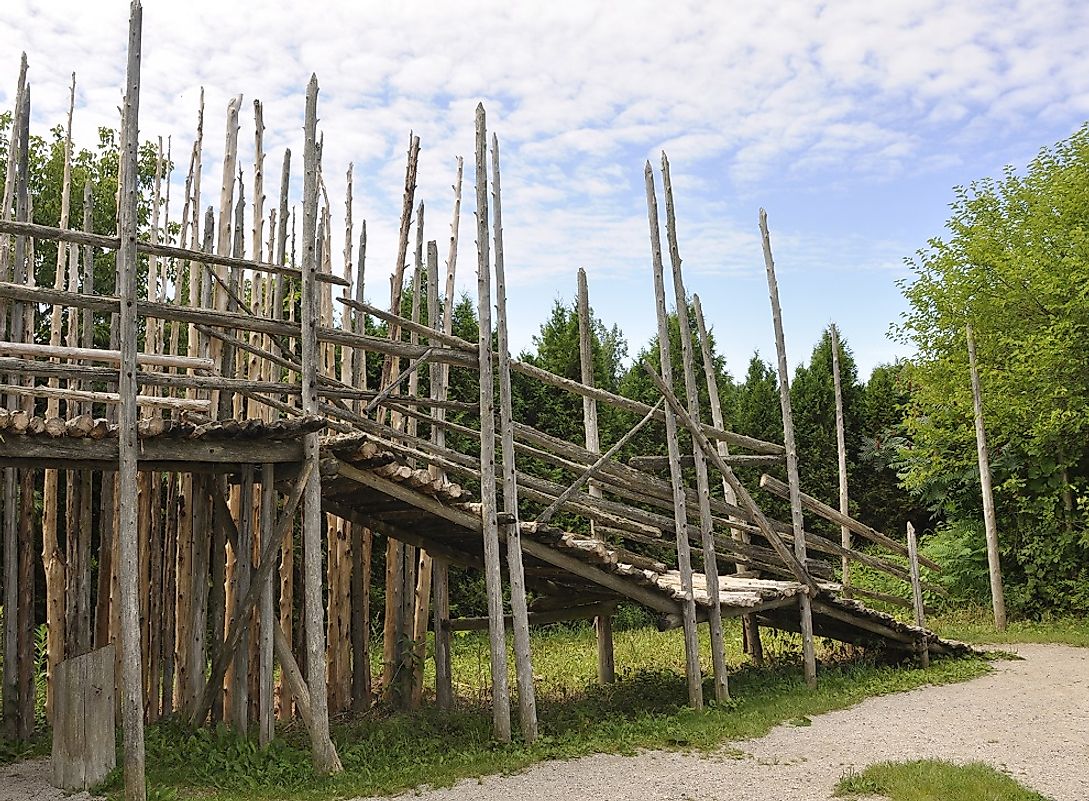The Erie People

Description
The Erie are Indigenous peoples of North America. They no longer exist today as a distinct group, since remaining survivors after a war with the Iroquois Confederacy were incorporated into the Huron-Wyandot and/or Seneca tribes, but when unified they were an Iroquoian-speaking people whose language is similar to that of the Huron.
The word Erie is derived from different names given to the tribe by their neighbors that refer to the long tail of the puma, as well as simply to cats. Thus, the Erie tribe was popularly known as the "Cat Nation." Traditionally, they lived on the southern shores of Lake Erie. They lived in sedentary agricultural villages in an area now including parts of northern Ohio, northwestern Pennsylvania, and western New York. The Erie peoples had very little interaction with the Europeans who visited North America and thus did not acquire the firearms that allowed their Iroquois rivals to dominate them.
Architecture
Erie tribes lived in fort-like communities which were set within a palisade made up of logs. Palisades were made of three concentric rows lined inwards with bark over bark. Erie people would construct standing places over these palisades for defenders to use. Besides this, to carry the water for putting out fires started by arsonist assailants, they used gutters. They built villages with sometimes as few as ten buildings or as many as 140 buildings. Their palisades, or stockades, were made of wooden stakes from tree trunks that were between 15 and 30 feet high. Each stake was sharpened to a fine point and they were placed in close proximity to one another, like a gate. Sometimes, Erie people built extra thick stockades. The Erie lived in long, rectangular, multi-family homes known as longhouses.
Cuisine
The Erie cooked simple food. Their main crops were corn, beans, and squash, from which they derived most of their nutrition in the summer. Following that, the Erie would embark on regular hunts in the winter. When there was a surplus of crops grown in some years, they stored it for future use in the cold winters. After harvesting the crops, the seasonal rounds involved fall hunting which lasted until the winter solstice. During early spring, fishing and passenger-pigeon hunting were carried out. This gave rise to a cycle of more dependence on plant foods in the warmer months and using more game meat and fish to supplement their diets in the winter.
Culture
The Erie people were densely populated relative to many other Indigenous tribes. They had several divisions among them, and many lived in permanent stockade towns. They were an agricultural people like many of their neighbors further south, mainly growing squash, beans, and corn as companion crops, in a triumvirate of produce popularly known as the "Three Sisters." Besides their green thumbs, they were also famous for weaving mats from rushes and crafting pottery for cooking. Furthermore, they were also accomplished hunters, and many of the tribes hunted and traded beaver skins, especially following European contact, because their pelts had such high market values. Erie burial customs involved elaborate "crying ceremonies," which lasted for five days and included dancing and singing, and the dead being placed on large scaffolds. Every 10 to 12 years, the Erie held an enormous ceremony, wherein they buried their remaining bones and flesh.
Threats
For many years, the Erie lived in peace and security without fear of being attacked. Their settlements were scattered over a large area, for when war, sickness or starvation occurred, the Erie deemed it to be dangerous to live in the open. There are no certain answers to what became of the once-great Erie, but it is believed the Erie were eliminated by the Iroquois and assimilated into other tribes like the Huron-Wyandot. Others believe that the Erie migrated from their original home out into different directions, with separate groups of survivors settling in Canada and Virginia.











